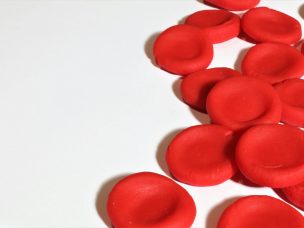Researchers introduced a new mutation to pluripotent stem cells, enabling their transformation to red blood cells without the need for expensive stem cell factor and erythropoietin, thus enabling large-scale RBC culture at lower costs.
Numerous hematological conditions require blood frequent blood transfusions. Therefore, in recent years, researchers have explored the potential of cultured red blood cells (cRBCs) to address transfusion needs and serve as carriers for drugs or immune tolerization agents. Various methods have been devised to transform primary hematopoietic progenitor cells (HPCs) into cRBCs, but these protocols face limitations for large-scale production as the primary HPCs need constant replenishment.
In the proceedings of the 65th ASH Annual Meeting & Exposition, researchers shared details of new findings that might enable economic and large-scale production of cRBCs.
High Cost Remains Major Barrier to the Widespread Use of Cultured RBCs
To overcome this hurdle, researchers have developed immortalized human erythroid cell lines by overexpressing specific proteins. These cell lines can be cultured for extended periods, some even indefinitely, and retain the ability to differentiate into cRBCs. However, challenges such as karyotypic instability, high costs associated with media and cytokines, and complex culturing procedures hinder their large-scale utilization. Previously, the pluripotent stem cell robust erythroid differentiation (PSC-RED) protocol was introduced to differentiate induced pluripotent stem cells (iPSCs) into cRBCs. Although advantageous, the PSC-RED protocol has limitations, including a lengthy differentiation period and high cytokine costs.
CRISPR/Cas9 Edited Stem Cells Do Not Need Expensive Cytokines for Culturing
To address these issues, the researchers utilized CRISPR/Cas9 technology to introduce specific mutations in iPSCs. The kitD816V mutation enables the SCF receptor to signal constitutively in the absence of stem cell factor (SCF), while the Jak2V617F mutation allows constitutive signaling through the JAK/STAT pathway in the absence of erythropoietin (Epo). This innovative approach eliminates the need for SCF and Epo in the PSC-RED protocol, reducing the cytokine cost significantly.
KitJak Cell Line — A Viable cRBC Production Option
The kitD816V/Jak2V617F double mutant iPSCs readily differentiated into self-renewing erythroid progenitor cells that could proliferate for more than 60 population doublings in an economical culture medium. These cells exhibited karyotypic stability, a crucial factor for their potential large-scale use. Named KitJak cells, they displayed an immuno-phenotype of late CFU-E/pro-erythroblast, allowing high-density culture and induction into cRBCs with a substantial yield.
The KitJak cell lines offer a solution for large-scale cRBC production. Their reproducible generation and stable karyotype, coupled with a relatively short differentiation procedure, make them an ideal candidate for fulfilling transfusion needs and other translational applications.
The Bottom Line
The development of KitJak cell lines marks a significant advancement in overcoming the limitations of previous methods for cRBC production. Their stability, efficiency, and compatibility with established blood typing systems open possibilities for large-scale erythroid cell production, addressing critical needs in the field of transfusion and beyond.
Source:
Bouhassira, E. (2023, December 10). IPSC-Derived KITD816V/JAK2V817F Double-Mutant KITJAK cell lines allow inexpensive Large-Scale production of enucleated red blood cells in the absence of SCF and erythropoietin. https://ash.confex.com/ash/2023/webprogram/Paper185109.html










